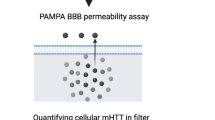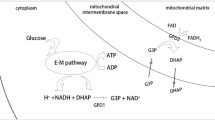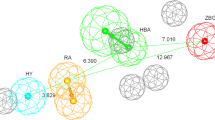Abstract
Huntington’s disease (HD) is a rare and progressive neurodegenerative disorder caused by polyglutamine (poly-Q) mutations of the huntingtin (HTT) gene resulting in chorea, cognitive, and psychiatric dysfunctions. Being a monogenic condition, reducing the levels of the mutated huntingtin protein (mHTT) holds promise as an effective therapeutic approach. GPR52, an orphan G-protein coupled receptor (GPCR), enriched in the striatum, is a novel target for slowing down the progression of HD by lowering the mHTT levels. Therefore, the study focuses on identifying potent small-molecule inhibitors for GPR52 using a combination of robust high-throughput virtual screening (HTVS) and pharmacokinetics profiling followed by fast pulling of ligand (FPL) and umbrella sampling (US) simulations. Initially, screening a library of 2,36,545 compounds was done against the binding pocket of GPR52. Based on binding affinity, stereochemical and non-bonded interactions, and pharmacokinetic profiling, 50 compounds were shortlisted. Selected hit compounds 1, 2, and 3 were subjected to FPL simulations with applied external bias potential to investigate their unique dissociation pathways and intermolecular interactions over time. Subsequently, the US simulations were performed on the selected hit compounds to estimate their binding free energy (ΔG). The analysis of the trajectories obtained from simulations revealed that the residues TYR34, TYR185, GLY187, ASP188, ILE189, SER299, PHE300, and THR303 within the active site of GPR52 were significant for efficient ligand binding through the formation of various hydrogen bond interactions and hydrophobic contacts. Out of the three hit compounds, compound 3 had the lowest ΔG of − 20.82 ± 0.44 kcal/mol. The study identified compounds 1, 2, and 3 as potential molecules that can be developed as GPR52 inhibitors holding promise for lowering mHTT levels.









Similar content being viewed by others
Data availability
All data generated and/or analyzed during this study are included in this published article and its supplementary information files.
References
Reiner A, Dragatsis I, Dietrich P (2011) Genetics and neuropathology of Huntington’s disease. Int Rev Neurobiol 98:325–372. https://doi.org/10.1016/B978-0-12-381328-2.00014-6
Pringsheim T, Wiltshire K, Day L, Dykeman J, Steeves T, Jette N (2012) The incidence and prevalence of Huntington’s disease: a systematic review and meta-analysis. Mov Disord 27(9):1083–1091. https://doi.org/10.1002/mds.25075
Jarosińska OD, Rüdiger SGD (2021) Molecular strategies to target protein aggregation in Huntington’s disease. Front Mol Biosci 8:769184. https://doi.org/10.3389/fmolb.2021.769184
Andhale R, Shrivastava D (2022) Huntington’s disease: a clinical review. Cureus 14(8):e28484. https://doi.org/10.7759/cureus.28484
McColgan P, Tabrizi SJ (2018) Huntington’s disease: a clinical review. Eur J Neurol 25(1):24–34. https://doi.org/10.1111/ene.13413
Potkin KT, Potkin SG (2018) New directions in therapeutics for Huntington disease. Future Neurol 13(2):101–121. https://doi.org/10.2217/fnl-2017-0035
Yamamoto A, Lucas JJ, Hen R (2000) Reversal of neuropathology and motor dysfunction in a conditional model of Huntington’s disease. Cell 101(1):57–66. https://doi.org/10.1016/S0092-8674(00)80623-6
Wang N, Gray M, Lu XH et al (2014) Neuronal targets for reducing mutant huntingtin expression to ameliorate disease in a mouse model of Huntington’s disease. Nat Med 20(5):536–541. https://doi.org/10.1038/nm.3514
Yao Y, Cui X, Al-Ramahi I et al (2015) A striatal-enriched intronic GPCR modulates huntingtin levels and toxicity. Elife 4:e05449. https://doi.org/10.7554/eLife.05449
Komatsu H (2021) Innovative therapeutic approaches for Huntington’s disease: from nucleic acids to GPCR-targeting small molecules. Front Cell Neurosci 15:785703. https://doi.org/10.3389/fncel.2021.785703
Song H, Li H, Guo S et al (2018) Targeting Gpr52 lowers mutant HTT levels and rescues Huntington’s disease-associated phenotypes. Brain 141(6):1782–1798. https://doi.org/10.1093/brain/awy081
Komatsu H, Maruyama M, Yao S et al (2014) Anatomical transcriptome of G protein-coupled receptors leads to the identification of a novel therapeutic candidate GPR52 for psychiatric disorders. PLoS ONE 9(2):e90134. https://doi.org/10.1371/journal.pone.0090134
Wu Z, Han Z, Tao L, Sun X, Su J, Hu J, Li C (2023) Dynamic insights into the self-activation pathway and allosteric regulation of the orphan G-protein-coupled receptor GPR52. J Chem Inf Model 63:5847–5862. https://doi.org/10.1021/acs.jcim.3c00672
Wang C, Zhang YF, Guo S, Zhao Q, Zeng Y, **e Z, **e X, Lu B, Hu Y (2021) GPR52 antagonist reduces huntingtin levels and ameliorates Huntington’s disease-related phenotypes. J Med Chem 64(2):941–957. https://doi.org/10.1021/acs.jmedchem.0c01133
Li L, Liu S, Wang B, Liu F, Xu S, Li P, Chen Y (2023) An updated review on develo** small molecule kinase inhibitors using computer-aided drug design approaches. Int J Mol Sci 24:13953. https://doi.org/10.3390/ijms241813953
Spiriti J, Wong CF (2021) Qualitative prediction of ligand dissociation kinetics from focal adhesion kinase using steered molecular dynamics. Life 11(2):74. https://doi.org/10.3390/life11020074
Åqvist J, Medina C, Samuelsson J-E (1994) A new method for predicting binding affinity in computer-aided drug design. Protein Eng 7:385–439. https://doi.org/10.1093/protein/7.3.38518
Nguyen TH, Zhou H, Minh DDL (2018) Using the fast Fourier transform in binding free energy calculations. J Comput Chem 39:621–636. https://doi.org/10.1002/jcc.25139
Yung-Chi C, Prusoff WH (1973) Relationship between the inhibition constant (KI) and the concentration of inhibitor which causes 50 per cent inhibition (I50) of an enzymatic reaction. Biochem Pharmacol 22:3099–3108. https://doi.org/10.1016/0006-2952(73)90196-2
Siebenmorgen T, Zacharias M (2019) Evaluation of predicted protein-protein complexes by binding free energy simulations. J Chem Theory Comput 15:2071–2086. https://doi.org/10.1021/acs.jctc.8b01022
Tanwar G, Mazumder AG, Bhardwaj V, Kumari S, Bharti R, Yamini SD, Das P, Purohit R (2019) Target identification, screening and in vivo evaluation of pyrrolone-fused benzosuberene compounds against human epilepsy using Zebrafish model of pentylenetetrazol-induced seizures. Sci Rep 9(1):7904. https://doi.org/10.1038/s41598-019-44264-6
Kumar Bhardwaj V, Purohit R, Kumar S (2021) Himalayan bioactive molecules as potential entry inhibitors for the human immunodeficiency virus. Food Chem 347:128932. https://doi.org/10.1016/j.foodchem.2020.128932
Hansson T, Marelius J, Åqvist J (1998) Ligand binding affinity prediction by linear interaction energy methods. J Comput Aided Mol Des 12:27–35. https://doi.org/10.1023/A:1007930623000
Chen F, Liu H, Sun H, Pan P, Li Y, Li D, Hou T (2016) Assessing the performance of the MM/PBSA and MM/GBSA methods—6: capability to predict protein–protein binding free energies and re-rank binding poses generated by protein–protein docking. Phys Chem Chem Phys 18:22129–22139. https://doi.org/10.1039/c6cp03670h
Peter K (1993) Free energy calculations: applications to chemical and biochemical phenomena. Chem Rev 93:2395–2417. https://doi.org/10.1021/cr00023a004
Pham MQ, Vu KB, Han Pham TN, Thuy Huong LT, Tran LH, Tung NT, Vu VV, Nguyen TH, Ngo ST (2020) Rapid prediction of possible inhibitors for SARS-CoV-2 main protease using docking and FPL simulations. RSC Adv 10(53):31991–31996. https://doi.org/10.1039/d0ra06212j
You W, Tang Z, Chang CA (2019) Potential mean force from umbrella sampling simulations: what can we learn and what is missed? J Chem Theory Comput 15:2433–2443. https://doi.org/10.1021/acs.jctc.8b01142
Torrie GM, Valleau JP (1977) Nonphysical sampling distributions in Monte Carlo free-energy estimation: umbrella sampling. J Comput Phys 23:187–199. https://doi.org/10.1016/0021-9991(77)90121-8
Dhiman A, Purohit R (2023) Identification of potential mutational hotspots in serratiopeptidase to address its poor pH tolerance issue. J Biomol Struct Dyn 41:8831–8843. https://doi.org/10.1080/07391102.2022.2137699
Singh R, Bhardwaj V, Purohit R (2021) Identification of a novel binding mechanism of Quinoline based molecules with lactate dehydrogenase of Plasmodium falciparum. J Biomol Struct Dyn 39(1):348–356. https://doi.org/10.1080/07391102.2020.1711809
Burley SK, Berman HM, Kleywegt GJ, Markley JL, Nakamura H, Velankar S (2017) Protein Data Bank (PDB): the single global macromolecular structure archive. Methods Mol Biol 1607:627–641. https://doi.org/10.1007/978-1-4939-7000-1_26
Lin X, Li M, Wang N et al (2020) Structural basis of ligand recognition and self-activation of orphan GPR52. Nature 579(7797):152–157. https://doi.org/10.1038/s41586-020-2019-0
Zhang Y (2008) I-TASSER server for protein 3D structure prediction. BMC Bioinf 9:40. https://doi.org/10.1186/1471-2105-9-40
Tian W, Chen C, Lei X, Zhao J, Liang J (2018) CASTp 3.0: computed atlas of surface topography of proteins. Nucleic Acids Res 46(W1):W363–W367. https://doi.org/10.1093/nar/gky473
Irwin JJ, Shoichet BK (2005) ZINC—a free database of commercially available compounds for virtual screening. J Chem Inf Model 45(1):177–182. https://doi.org/10.1021/ci049714+
Abraham MJ, Murtola T, Schulz R, Páll S, Smith JC, Hess B, Lindah E (2015) Gromacs: high performance molecular simulations through multi-level parallelism from laptops to supercomputers. SoftwareX 1–2:19–25. https://doi.org/10.1016/j.softx.2015.06.001
Oostenbrink C, Villa A, Mark AE, Van Gunsteren WF (2004) A biomolecular force field based on the free enthalpy of hydration and solvation: the GROMOS force-field parameter sets 53A5 and 53A6. J Comput Chem 25(13):1656–1676. https://doi.org/10.1002/jcc.20090
Stroet M, Caron B, Visscher KM, Geerke DP, Malde AK, Mark AE (2018) Automated topology builder version 3.0: prediction of solvation free enthalpies in water and hexane. J Chem Theory Comput 14(11):5834–5845. https://doi.org/10.1021/acs.jctc.8b00768
Morris GM, Ruth H, Lindstrom W, Sanner MF, Belew RK, Goodsell DS, Olson AJ (2009) Software news and updates AutoDock4 and AutoDockTools4: automated docking with selective receptor flexibility. J Comput Chem 30(16):2785–2791. https://doi.org/10.1002/jcc.21256
Eberhardt J, Santos-Martins D, Tillack AF, Forli S (2021) AutoDock Vina 1.2.0: new docking methods, expanded force field, and python bindings. J Chem Inf Model 61(8):3891–3898. https://doi.org/10.1021/acs.jcim.1c00203
Afgan E, Nekrutenko A, Grüning BA et al (2022) The Galaxy platform for accessible, reproducible and collaborative biomedical analyses: 2022 update. Nucleic Acids Res 50(W1):W345–W351. https://doi.org/10.1093/nar/gkac247
Fuhrmann J, Rurainski A, Lenhof HP, Neumann D (2010) A new Lamarckian genetic algorithm for flexible ligand-receptor docking. J Comput Chem 31(9):1911–1918. https://doi.org/10.1002/jcc.21478
**ong G, Wu Z, Yi J et al (2021) ADMETlab 2.0: an integrated online platform for accurate and comprehensive predictions of ADMET properties. Nucleic Acids Res 49(W1):W5–W14. https://doi.org/10.1093/nar/gkab255
Kästner J (2011) Umbrella sampling. Wiley Interdiscip Rev Comput Mol Sci 1(6):932–942. https://doi.org/10.1002/wcms.66
Lemkul JA, Bevan DR (2010) Assessing the stability of Alzheimer’s amyloid protofibrils using molecular dynamics. J Phys Chem B 114(4):1652–1660. https://doi.org/10.1021/jp9110794
Kari S, Murugesan A, Thiyagarajan R, Kidambi S, Razzokov J, Selvaraj C, Kandhavelu M, Marimuthu P (2023) Bias-force guided simulations combined with experimental validations towards GPR17 modulators identification. Biomed Pharmacother 160:114320. https://doi.org/10.1016/j.biopha.2023.114320
Kumar P, Bhardwaj VK, Purohit R (2023) Dispersion-corrected DFT calculations and umbrella sampling simulations to investigate stability of Chrysin-cyclodextrin inclusion complexes. Carbohydr Polym 319:121162. https://doi.org/10.1016/j.carbpol.2023.121162
Tam NM, Nguyen TH, Ngan VT, Tung NT, Ngo ST (2022) Unbinding ligands from SARS-CoV-2 Mpro via umbrella sampling simulations. R Soc Open Sci 9(1):211480. https://doi.org/10.1098/rsos.211480
Ferrenberg AM, Swendsen RH (1989) Optimized Monte Carlo data analysis. Phys Rev Lett 63(12):1195–1198. https://doi.org/10.1103/PhysRevLett.63.1195
Hub JS, de Groot BL, van der Spoel D (2010) g_wham—a free weighted histogram analysis implementation including robust error and autocorrelation estimates. J Chem Theory Comput 6(12):3713–3720. https://doi.org/10.1021/ct100494z
Efron B (2007) Bootstrap methods: another look at the jackknife. Ann Stat 7(1):1–26. https://doi.org/10.1214/aos/1176344552
Sejdiu BI, Tieleman DP (2020) Lipid-protein interactions are a unique property and defining feature of G protein-coupled receptors. Biophys J 118(8):1887–1900. https://doi.org/10.1016/j.bpj.2020.03.008
Bhardwaj VK, Purohit R (2023) A comparative study on inclusion complex formation between formononetin and β-cyclodextrin derivatives through multiscale classical and umbrella sampling simulations. Carbohydr Polym 310:120729. https://doi.org/10.1016/j.carbpol.2023.120729
Segall D (2012) Multi-parameter optimization: identifying high quality compounds with a balance of properties. Curr Pharm Des 18:1292–1310. https://doi.org/10.2174/138161212799436430
Singh R, Bhardwaj VK, Purohit R (2022) Computational targeting of allosteric site of MEK1 by quinoline-based molecules. Cell Biochem Funct 40(5):481–490. https://doi.org/10.1002/cbf.3709
Lipinski CA (2004) Lead- and drug-like compounds: the rule-of-five revolution. Drug Discov Today Technol 1(4):337–341. https://doi.org/10.1016/j.ddtec.2004.11.007
Veber DF, Johnson SR, Cheng HY, Smith BR, Ward KW, Kopple KD (2002) Molecular properties that influence the oral bioavailability of drug candidates. J Med Chem 45(12):2615–2623. https://doi.org/10.1021/jm020017n
Badrinarayan P, Narahari Sastry G (2011) Virtual high throughput screening in new lead identification. Comb Chem High Throughput Screen 14(10):840–860. https://doi.org/10.2174/138620711797537102
Shao J, Kuiper BP, Thunnissen A-MWH, Cool RH, Zhou L, Huang C, Dijkstra BW, Broos J (2022) The role of tryptophan in π interactions in proteins: an experimental approach. J Am Chem Soc 144(30):13815–13822. https://doi.org/10.1021/jacs.2c04986
Wong CF (2018) Steered molecular dynamics simulations for uncovering the molecular mechanisms of drug dissociation and for drug screening: a test on the focal adhesion kinase. J Comput Chem 39(19):1307–1318. https://doi.org/10.1002/jcc.25201
Gaillard T (2018) Evaluation of AutoDock and AutoDock Vina on the CASF-2013 benchmark. J Chem Inf Model 58(8):1697–1706. https://doi.org/10.1021/acs.jcim.8b00312
Hata H, Phuoc Tran D, Marzouk Sobeh M, Kitao A (2021) Binding free energy of protein/ligand complexes calculated using dissociation Parallel Cascade Selection Molecular Dynamics and Markov state model. Biophys Physicobiol 18:305–316. https://doi.org/10.2142/biophysico.bppb-v18.037
Ngo ST, Vu KB, Bui LM, Vu VV (2019) Effective estimation of ligand-binding affinity using biased sampling method. ACS Omega 4(2):3887–3893. https://doi.org/10.1021/acsomega.8b03258
Schaeffer L (2008) The role of functional groups in drug-receptor interactions. The practice of medicinal chemistry. Elsevier, pp 359–378
Tabrizi SJ, Ghosh R, Leavitt BR (2019) Huntingtin lowering strategies for disease modification in Huntington’s disease. Neuron 102(4):899. https://doi.org/10.1016/j.neuron.2019.01.039
Jurcau A, Jurcau MC (2022) Therapeutic strategies in Huntington’s disease: from genetic defect to gene therapy. Biomedicines 10(8):1895. https://doi.org/10.3390/biomedicines10081895
Vassena R, Heindryckx B, Peco R, Pennings G, Raya A, Sermon K, Veiga A (2016) Genome engineering through CRISPR/Cas9 technology in the human germline and pluripotent stem cells. Hum Reprod Update 22(4):411–419. https://doi.org/10.1093/humupd/dmw005
Komatsu H (2015) Novel therapeutic GPCRS for psychiatric disorders. Int J Mol Sci 16(6):14109–14121. https://doi.org/10.3390/ijms160614109
Huang Y, Todd N, Thathiah A (2017) The role of GPCRs in neurodegenerative diseases: avenues for therapeutic intervention. Curr Opin Pharmacol 32:96–110. https://doi.org/10.1016/j.coph.2017.02.001
Ma M, Guo S, Lin X et al (2020) Targeted proteomics combined with affinity mass spectrometry analysis reveals antagonist E7 acts as an intracellular covalent ligand of orphan receptor GPR52. ACS Chem Biol 15(12):3275–3284. https://doi.org/10.1021/acschembio.0c00867
Acknowledgements
The authors thank Divya Jhinjharia (Gautam Buddha University) and Dr. Sayantan Mondal (Boston University) for their helpful discussions and critical review.
Funding
The authors thank the Department of Science and Technology-FIST, Government of India for the infrastructure facilities.
Author information
Authors and Affiliations
Contributions
Conceptualization and Methodology: SS, HG; Formal analysis and investigation: HG; Writing—original draft preparation: HG; Supervision and Writing—review and editing: SS.
Corresponding author
Ethics declarations
Competing interest
The authors have no competing interests to declare that are relevant to the content of this article.
Ethical approval
Not applicable.
Consent to participate
Not applicable.
Consent for publication
Not applicable.
Additional information
Publisher's Note
Springer Nature remains neutral with regard to jurisdictional claims in published maps and institutional affiliations.
Supplementary Information
Below is the link to the electronic supplementary material.
Rights and permissions
Springer Nature or its licensor (e.g. a society or other partner) holds exclusive rights to this article under a publishing agreement with the author(s) or other rightsholder(s); author self-archiving of the accepted manuscript version of this article is solely governed by the terms of such publishing agreement and applicable law.
About this article
Cite this article
Gupta, H., Sahi, S. High-throughput virtual screening of potential inhibitors of GPR52 using docking and biased sampling method for Huntington’s disease therapy. Mol Divers (2023). https://doi.org/10.1007/s11030-023-10763-y
Received:
Accepted:
Published:
DOI: https://doi.org/10.1007/s11030-023-10763-y




